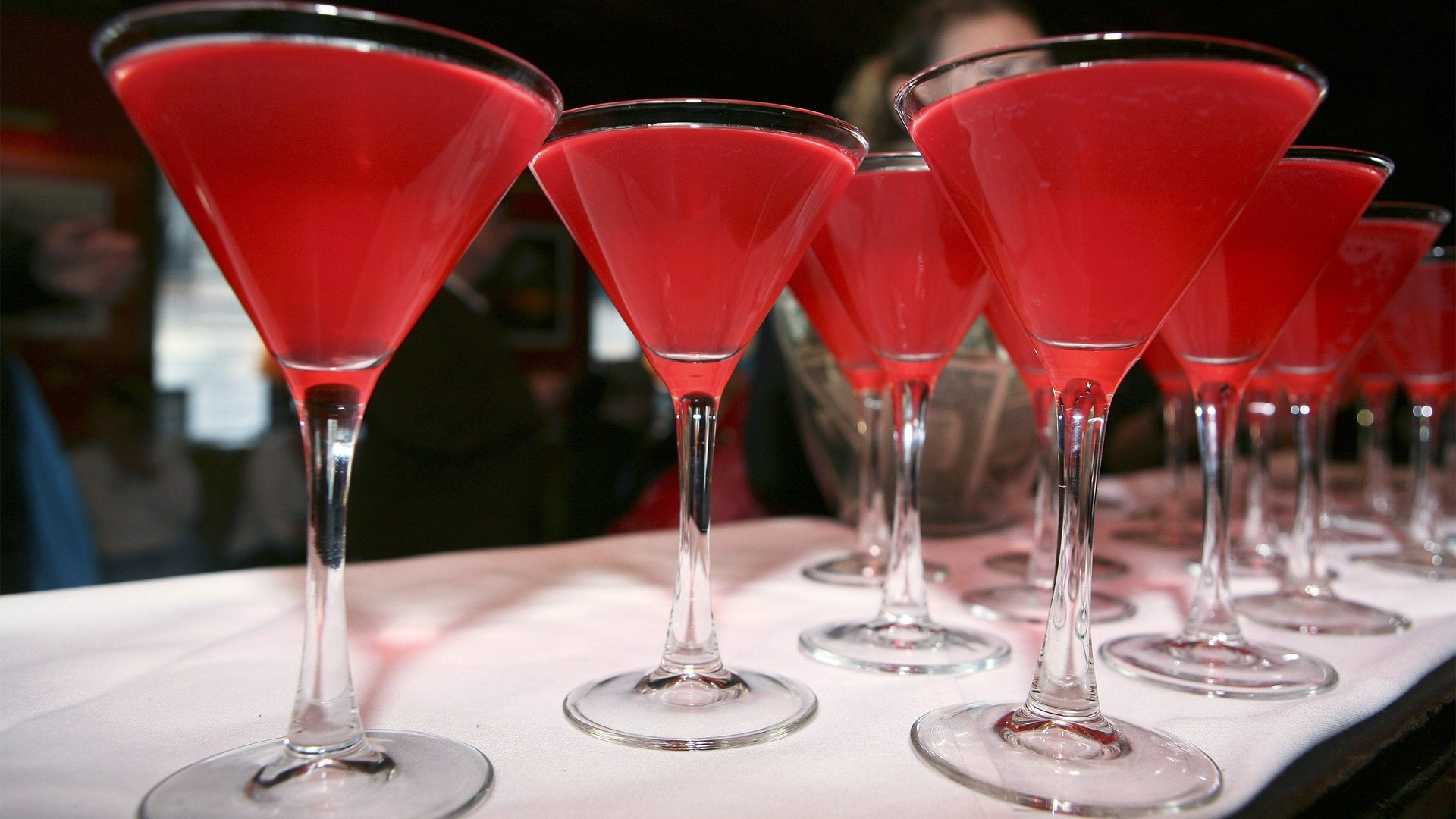The hard data behind how men and women drink—according to their drunk tweets
When I go to a bar with male and female friends, the server often places the pink drinks in front of the girls and the beers in front of the guys, regardless of who ordered what. As a feminist, I should probably get very annoyed at this patriarchal repression of my alcoholic freedom.


When I go to a bar with male and female friends, the server often places the pink drinks in front of the girls and the beers in front of the guys, regardless of who ordered what. As a feminist, I should probably get very annoyed at this patriarchal repression of my alcoholic freedom.
The truth is, though, that I like pink drinks. The first cocktail I ordered on my 21st birthday was a vodka and cranberry. I almost always order some fruity little drink cause I can’t shoot whiskey, which makes me wonder: do men and women in fact drink differently? Some differences are obvious: men can drink more. But we can dig into the subtler differences using two Twitter datasets:
Tweets from drunk people: half a million tweets collected over the course of a year (June 2014-July 2015) containing the hashtags “drunk” or “drunktweet.” Example:
Tweets mentioning alcohol: 2 million tweets mentioning common alcohol names. Example: “Sometimes I like to pretend I have class. Example: #Mimosas.”
Both sets of tweets come from all over the world: about half are from US timezones, “Europe/London” and “Europe/Amsterdam” are the most frequent non-US timezones.
As you might imagine, drunk men and women differ in ways besides what they’ve chosen to get drunk on. Here are the most male and female-dominated hashtags in the drunk tweets dataset:
Drunk women are are more likely to express affection and take pictures in stereotypically female ways (#pout is female-dominated, and so are #makeup and #selfie). Apparently gay men like to drunk tweet, although there are no obvious counterparts from gay women. Some of the male-dominated hashtags mix actual porn and legitimate tweets (#naked and #passedout, for example; I tried to filter out porn, but it turns out that drunk men really like to talk about sex). We can use a technique called sentiment analysis to look for differences in emotion expressed by each gender. Women express more positive emotion and are more likely to mention friends and family, while men curse more.
Is the stereotype of the “girly drink” accurate? I looked at the tweets mentioning specific types of alcohol to find out. The charts below show the percentage of women using specific drinking-related hashtags.
All the beers are male-dominated, but some beers are more manly than others: light beers (especially those with “light” in the name) have more women tweeting about them than IPAs.
Wines are more gender-balanced: sparkling wines tend to be female-dominated, and white wine is slightly more female-dominated than red wine.
Vodka and whiskey are male-dominated (with women more likely to misspell “Johnnie Walker” as “Johnny Walker”—come on, ladies!). The most female-dominated cocktail hashtags include #cosmo, #sexonthebeach, #margarita, and #pinacolada.
All the fruit flavors are female-dominated, while malt and rye skew male.
So the stereotype of the girly drink is extremely well-supported in the Twitter dataset. But there are some caveats here. I detected the gender of the Tweeter from their first name, but this doesn’t work for people who don’t provide names, who use psuedonyms, or whose gender does not fit a binary description. People tweeting while they’re drinking are probably an unusual population (can you really be having that good a time?). The girly drink stereotype may make men shy about broadcasting their love of margaritas on Twitter. Even if women really do drink more margaritas, is that really because they like them more, or because they’re socially pressured to do so? There is some evidence that men and women have different senses of taste, and that women are more likely to be “supertasters” with more taste buds. But social factors undoubtedly play a major role; television advertising, for example, has reinforced the girly drink stereotype, with men appearing twice as often as women in beer commercials. Gender preferences for alcohol also change over time: the share of female whiskey drinkers has more than doubled since the 1990s, and in the 19th century women were the primary producers of whiskey.
The Twitter data support the idea that gender differences in drinking preferences, far from being immutable, are shaped by social factors. One of the most obvious differences between men and women is that men tweet about #beer about twice as often as they tweet about #wine, whereas women tweet about #wine slightly more often than #beer. But this is not true for all men and all women. Here are three exceptions.
- Women on Fourth of July drink more like men than they do like other women: their #beer tweets outnumber #wine tweets more than two to one.
- Men who identify as gay in their Twitter profiles tweet about #wine about as often as they tweet about #beer—a pattern more similar to women than to men who do not identify as gay.
- State-by-state differences. In Colorado, men tweet about beer eight times as often as they tweet about wine; in California, it’s much closer to equally often. Women in New York tweet about wine twice as often as beer; women in North Carolina tweet about beer twice as often as wine. There are huge differences between states, in other words, and women in beer-skewed states show a greater preference for beer than men in wine-skewed states.
So, yes, the “girly drink” appears to be universal law—unless you happen to be a gay man or a woman on the Fourth of July or a man in California or a woman in North Carolina. Even the most pronounced gender skews can depend heavily on social conditions.